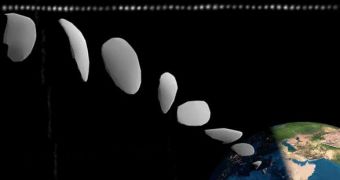Astronomers have been lobbying for the creation of a telescope capable of keeping an eye out for dangers coming from the skies for a while now, and their prayers will apparently be answered by a new observations project.
According to experts, the Asteroid Terrestrial-impact Last Alert System (ATLAS) will be capable of observing Earth's neighborhood for any potential threats, all while keeping mission costs at an affordable level.
The goal of the initiative is to keep an eye out for near-Earth objects (NEO), which may include asteroids and meteorites. These space rocks are very dangerous, and we must be prepared in advance if we are to survive an encounter with them.
In the past, our planet suffered a large number of nearly-total or partial extinction events, some of which experts believe were produced by various NEO impacting our planet.
Though everyone recognizes the importance of having a NEO alert system in place, nobody seems to be prepared to actually pay for it. But experts say that this is where ATLAS comes in.
The new observatory is the brain child of John Tonry and Robert Jedicke, two space experts at the University of Hawaii's Institute for Astronomy.
They explain that ATLAS will be the name given to a pair of space telescope, which will be deployed to orbit separated by about 100 kilometers, or 60 miles.
The warning system would observe the entire night sky two times per night, its creators say.
The dual nature of the observatory will allow scientists to determine whether the objects the instruments see are distant or close, and if they are moving or standing still.
According to the proposal, the entire space above the planet would be divided into four areas, two of which will be located above the Northern Hemisphere, and two above the southern one.
Each of the area would need to be covered by a pair of ATLAS devices, which means that the total number of telescopes need to safeguard Earth from all sides would be eight.
“It's a time for this technology right now,” explains Jedicke, who is a co-investigator of the ATLAS project. “You couldn't do this project five years ago. And we want to be the first people to do it,” he adds.
The expert explains that some of the technologies which will go on ATLAS were not readily available half a decade ago, which means that costs for an ATLAS-like mission would have been sky-high, Space reports.

 14 DAY TRIAL //
14 DAY TRIAL //